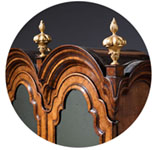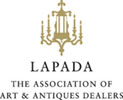17th Century William and Mary Rosewood Coffre Fort on Stand, Secret Compartments
Sold
Request Information
Follow Us
17th Century William and Mary Rosewood Coffre Fort on Stand, Secret Compartments
The unique 17th-century William and Mary rosewood coffre forte, circa 1690, raised on George I walnut stand, circa 1720.
The rosewood veneered exterior is entirely decorated in gilt brass straps. Once the lid is opened you can open the gilt brass catch to release the cover revealing a void. You can slide out the left and right verticle pieces which reveal oak boxes on each side and you will note a small brass knob to the centre. I was baffled at first as to what this knob was for but it is a key to release the secret drawer in the lower section. You insert it into a small hole and this releases the spring allowing you to slide the drawer divide out.
Once this and the drawers are removed, you can slide the entire base of the box out which hides a tray and two large drawers to either side. It is all very well thought out and the cabinetmaker has created an optical illusion. Looking at the box you would have said that there is no way that the large secret drawers and tray could fit in the lower section below the two drawers but the drop-down front is positioned at the top of the base which makes it appear 1 inch but it is greater than 2 inches!
The walnut cabriole leg stand dates from the reign of King George I, circa 1720 and it is likely that it was a bespoke commission to elegantly raise the coffre forte in the period. It should be noted that this is an extremely rare addition.
When placed on the stand the total height is 88 cm.
Condition
Good. Wear consistent with age and use. Lovely original condition with well-patinated surfaces
Dimensions
Height: 34.65 in. (88 cm)
Width: 15.16 in. (38.5 cm)
Depth: 9.06 in. (23 cm)
PREVIOUSLY SOLD
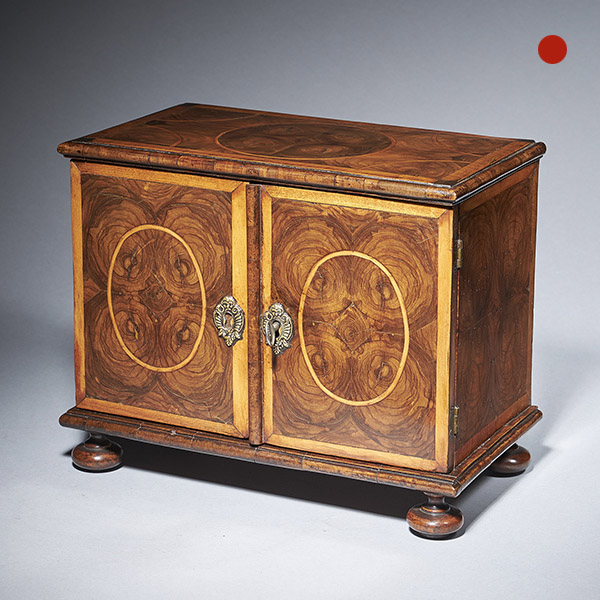
17th-Century miniature table cabinet
The miniature table cabinet opens to an arrangement of drawers, a row of four, a bank of four and a long pen drawer, similarly veneered in oysters of olive.
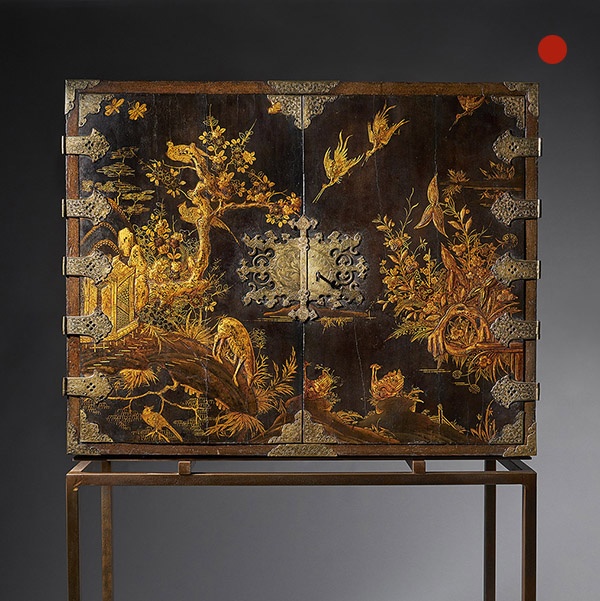
Charles II Japanned Cabinet of exceptional condition c. 1675 raised on a contemporary stand.
Charles II Japanned Cabinet of exceptional condition c. 1675 raised on a contemporary stand SOLD Follow UsCharles II Japanned Cabinet of exceptional condition c. 1675 raised on a contemporary stand An English Charles II Japanned cabinet of...
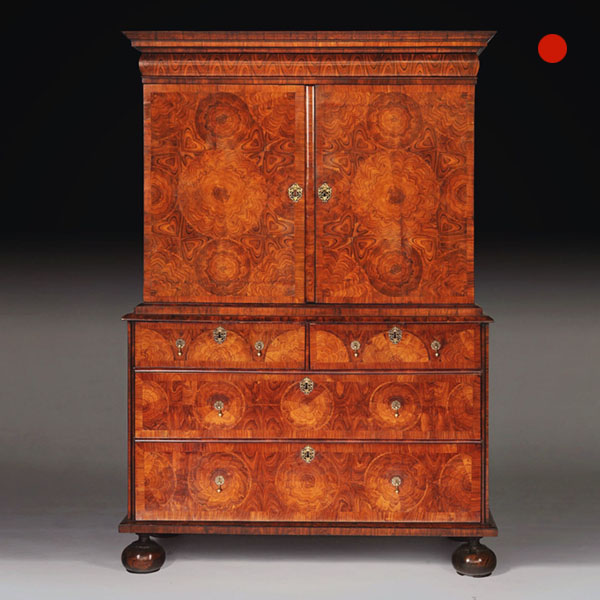
William and Mary Kingwood or ‘Princes’ wood oyster cabinet on chest
When the most expensive timber of the 17th century met Thomas Pistor. There were, in fact, two cabinet-makers called Thomas Pistor, father and son, working for a period at the same time but at different premises. One or both are known to have made furniture of quality for Levens Hall.
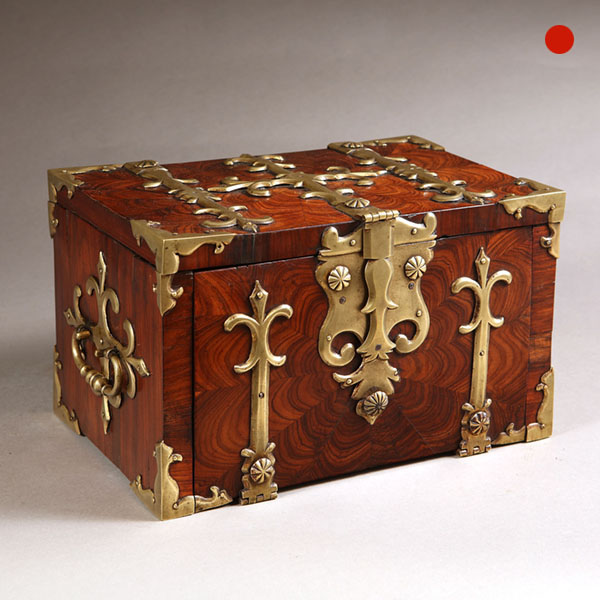
17th Century William and Mary Kingwood Strongbox
A 17th century William and Mary Kingwood strongbox, with gilt brass straps. This strongbox has to be one of the most charming and certainly the smallest example we have encountered, at just 17.5 cm high, 28 cm wide and 18 cm deep. A strongbox of similar merit form and style resides at Burghley House in ‘The 1st George State Room.
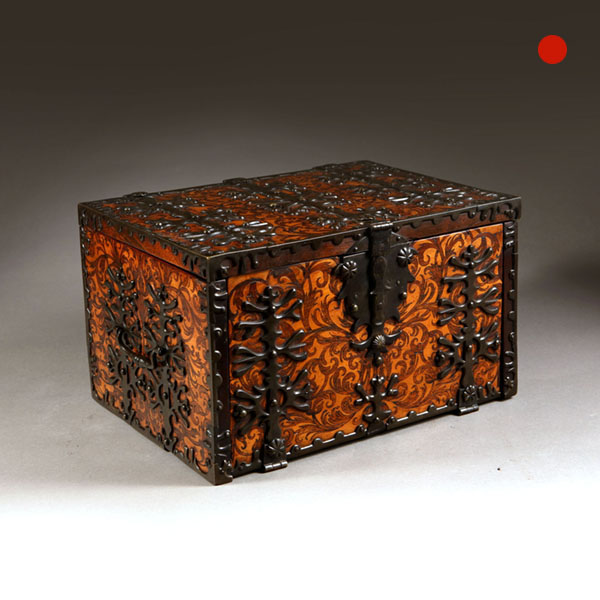
William and Mary Seaweed Marquetry Strong Box Firmly Attributed to Gerrit Jensen
A 17th century William and Mary seaweed or arabesque marquetry strong box, with firm attribution to the royal cabinetmaker, Gerrit Jensen, circa 1680-1700, England.
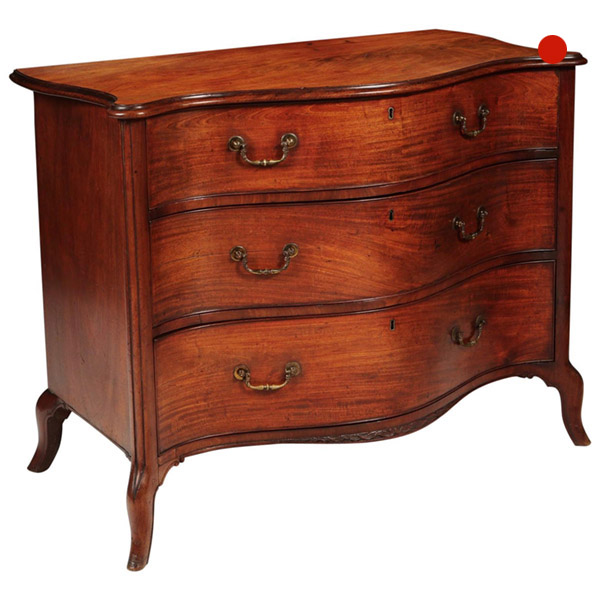
18th Century George III Mahogany Serpentine Chest or Commode
A fine George III mahogany serpentine commode, England, circa 1770. Attributed to Henry Hill, Marlborough. The three graduated drawers retain their original gilt brass handles over a unique carved apron and flanked by moulded angles continuing into the shaped cabriole feet.

17th-Century miniature table cabinet
The miniature table cabinet opens to an arrangement of drawers, a row of four, a bank of four and a long pen drawer, similarly veneered in oysters of olive.

Charles II Japanned Cabinet of exceptional condition c. 1675 raised on a contemporary stand.
Charles II Japanned Cabinet of exceptional condition c. 1675 raised on a contemporary stand SOLD Follow UsCharles II Japanned Cabinet of exceptional condition c. 1675 raised on a contemporary stand An English Charles II Japanned cabinet of...

William and Mary Kingwood or ‘Princes’ wood oyster cabinet on chest
When the most expensive timber of the 17th century met Thomas Pistor. There were, in fact, two cabinet-makers called Thomas Pistor, father and son, working for a period at the same time but at different premises. One or both are known to have made furniture of quality for Levens Hall.

17th Century William and Mary Kingwood Strongbox
A 17th century William and Mary Kingwood strongbox, with gilt brass straps. This strongbox has to be one of the most charming and certainly the smallest example we have encountered, at just 17.5 cm high, 28 cm wide and 18 cm deep. A strongbox of similar merit form and style resides at Burghley House in ‘The 1st George State Room.

William and Mary Seaweed Marquetry Strong Box Firmly Attributed to Gerrit Jensen
A 17th century William and Mary seaweed or arabesque marquetry strong box, with firm attribution to the royal cabinetmaker, Gerrit Jensen, circa 1680-1700, England.

18th Century George III Mahogany Serpentine Chest or Commode
A fine George III mahogany serpentine commode, England, circa 1770. Attributed to Henry Hill, Marlborough. The three graduated drawers retain their original gilt brass handles over a unique carved apron and flanked by moulded angles continuing into the shaped cabriole feet.
YOU MAY ALSO LIKE
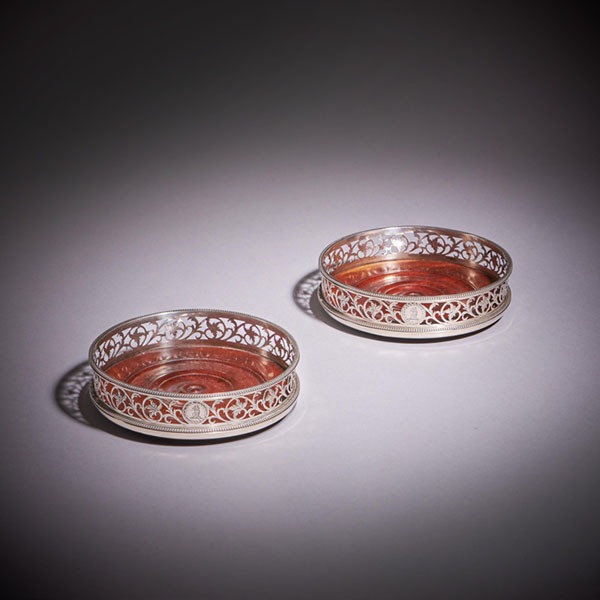
A Fine Pair of 18th Century George III Silver Engraved Open Fret Wine Coasters
A Fine Pair of 18th Century George III Silver Engraved Open Fret Wine Coasters £3,600Follow UsA...
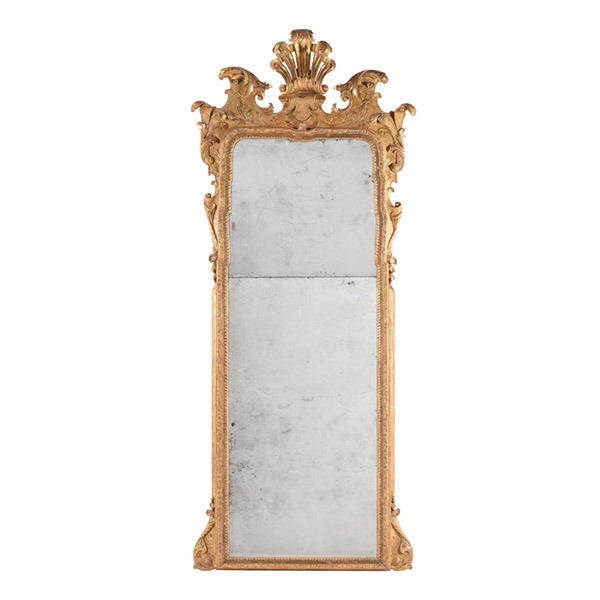
A Large 18th Century George I Gilt-Gesso Pier Glass, Attributed to John Belchier
A Large 18th Century George I Gilt-Gesso Pier Glass, Attributed to John Belchier £42,000Follow UsA...
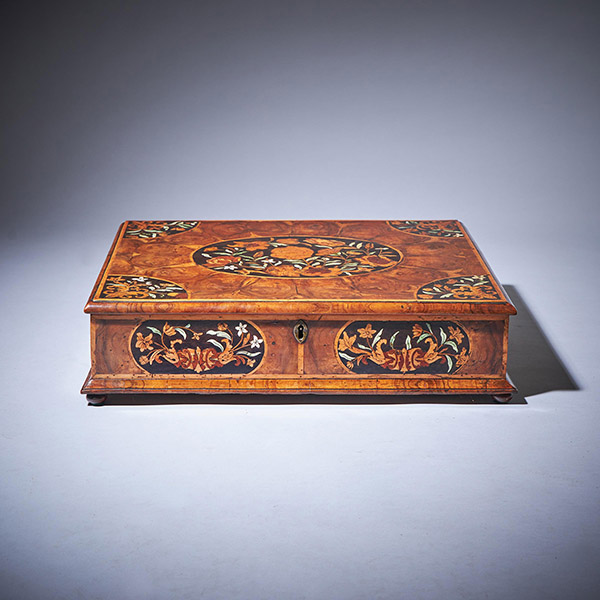
17th Century William and Mary Floral Marquetry Olive Oyster Lace Box, Circa 1685
17th Century William and Mary Floral Marquetry Olive Oyster Lace Box, Circa 1685 £16,000Follow...
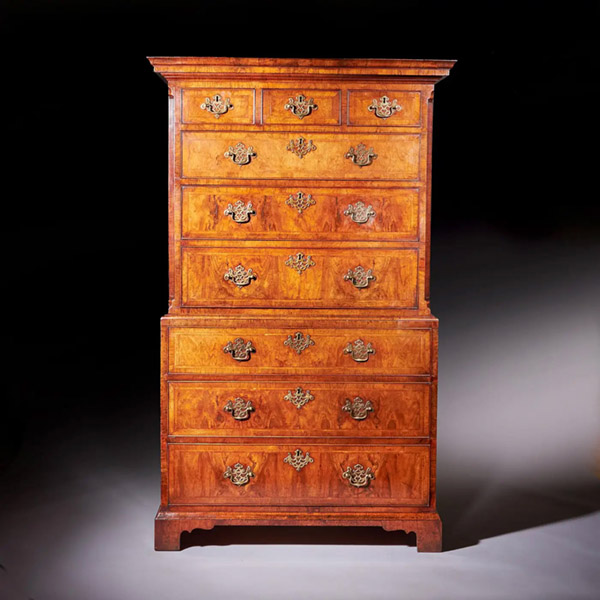
A Fine 18th Century George II Figured Walnut Chest on Chest or Tallboy, 1740
A Fine 18th Century George II Figured Walnut Chest on Chest or Tallboy, 1740 £14,000[wpforms_selector form_id="11387" _builder_version="4.22.1" _module_preset="default" custom_margin="-30px||||false|false" hover_enabled="0"...
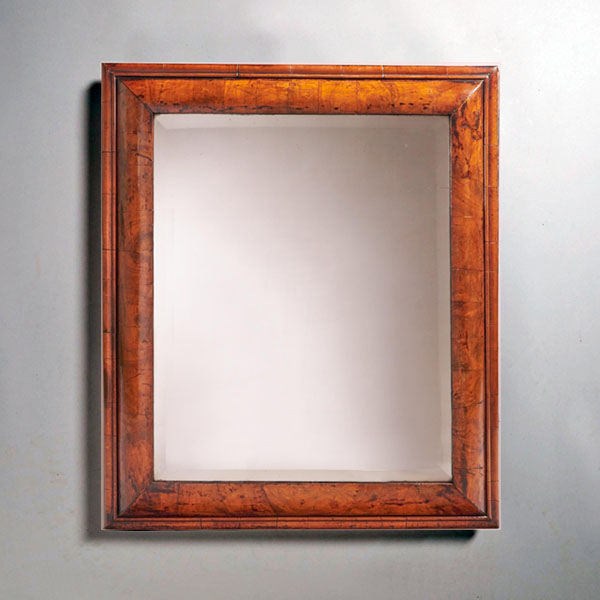
A Fine William and Mary 17th Century Figured Walnut Cushion Mirror C, 1690
A Fine William and Mary 17th Century Figured Walnut Cushion Mirror C, 1690 £6,500Follow UsA Fine William and Mary 17th Century Figured Walnut Cushion Mirror C, 1690 A large William and Mary 17th century figured walnut cushion mirror, circa...
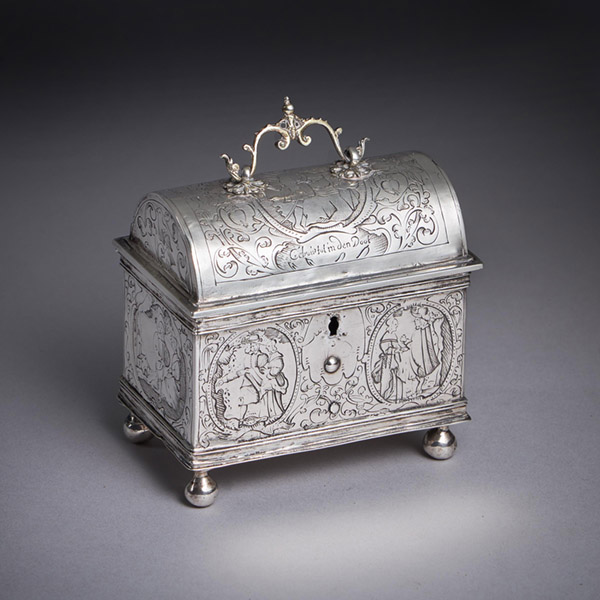
A museum-grade mid-17th century Dutch silver marriage casket or knottekistje, circa 1660
A museum-grade mid-17th century Dutch silver marriage casket or knottekistje, circa 1660 £9,500 [wpforms_selector form_id="11387" show_title="on" _builder_version="4.22.1" _module_preset="default" custom_margin="-30px||||false|false"...

A Fine Pair of 18th Century George III Silver Engraved Open Fret Wine Coasters
A Fine Pair of 18th Century George III Silver Engraved Open Fret Wine Coasters £3,600Follow UsA...

A Large 18th Century George I Gilt-Gesso Pier Glass, Attributed to John Belchier
A Large 18th Century George I Gilt-Gesso Pier Glass, Attributed to John Belchier £42,000Follow UsA...

17th Century William and Mary Floral Marquetry Olive Oyster Lace Box, Circa 1685
17th Century William and Mary Floral Marquetry Olive Oyster Lace Box, Circa 1685 £16,000Follow...

A Fine 18th Century George II Figured Walnut Chest on Chest or Tallboy, 1740
A Fine 18th Century George II Figured Walnut Chest on Chest or Tallboy, 1740 £14,000[wpforms_selector form_id="11387" _builder_version="4.22.1" _module_preset="default" custom_margin="-30px||||false|false" hover_enabled="0"...

A Fine William and Mary 17th Century Figured Walnut Cushion Mirror C, 1690
A Fine William and Mary 17th Century Figured Walnut Cushion Mirror C, 1690 £6,500Follow UsA Fine William and Mary 17th Century Figured Walnut Cushion Mirror C, 1690 A large William and Mary 17th century figured walnut cushion mirror, circa...

A museum-grade mid-17th century Dutch silver marriage casket or knottekistje, circa 1660
A museum-grade mid-17th century Dutch silver marriage casket or knottekistje, circa 1660 £9,500 [wpforms_selector form_id="11387" show_title="on" _builder_version="4.22.1" _module_preset="default" custom_margin="-30px||||false|false"...
